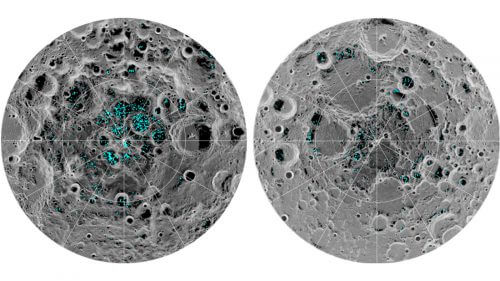These ice deposits are spread over a wide area, and they may be ancient. In the South Pole, most of the ice is concentrated in craters, while the ice of the North Pole covers a larger area

Scientists have discovered for the first time direct evidence of the existence of water ice in the polar regions of the Moon.
These ice deposits are spread over a wide area, and they may be ancient. In the South Pole, most of the ice is concentrated in craters, while the ice of the North Pole covers a larger area.
A team of scientists from the Universities of Hawaii and Brown, as well as from NASA's Ames Center in California, used data transmitted from NASA's Moon Mineralogy Mapper (M3) instrument mounted on the Chandrayaan-1 spacecraft launched in 1 by the Indian Research Organization the space. This unique facility was designed, among other things, to locate ice deposits on the moon, and the researchers were able to identify this with three different spectral signatures.
The spacecraft collected data that not only showed that these areas have reflective properties that we would expect from ice, but were also able to directly measure the unique way in which water molecules absorb infrared light, so that it is even possible to distinguish between liquid water vapor and solid ice.
Most of the water ice deposits on the moon are found in the bottoms of craters near the poles, where temperatures do not exceed minus 150 degrees Celsius. Because of the very small tilt of the moon's rotation axis, sunlight never reaches these areas.
Previous observations have indirectly found possible signs of surface ice at the moon's south pole, but the findings could also be explained by other phenomena, such as unusually reflective soil.
The fact that there is enough ice on the surface, will allow accessibility as a resource for future journeys in space exploration and certainly the existence of a colony on the moon. Also, the study of these deposits - how the ice got there and how it reacts with the lunar environment - may be the main focus of the mission for NASA and its commercial partners, when the agency intends to return and explore the moon.
The findings were published in the journal PNAS of the National Academy of Sciences on August 20, 2018.
For a message on NASA's JPL website
More of the topic in Hayadan:
